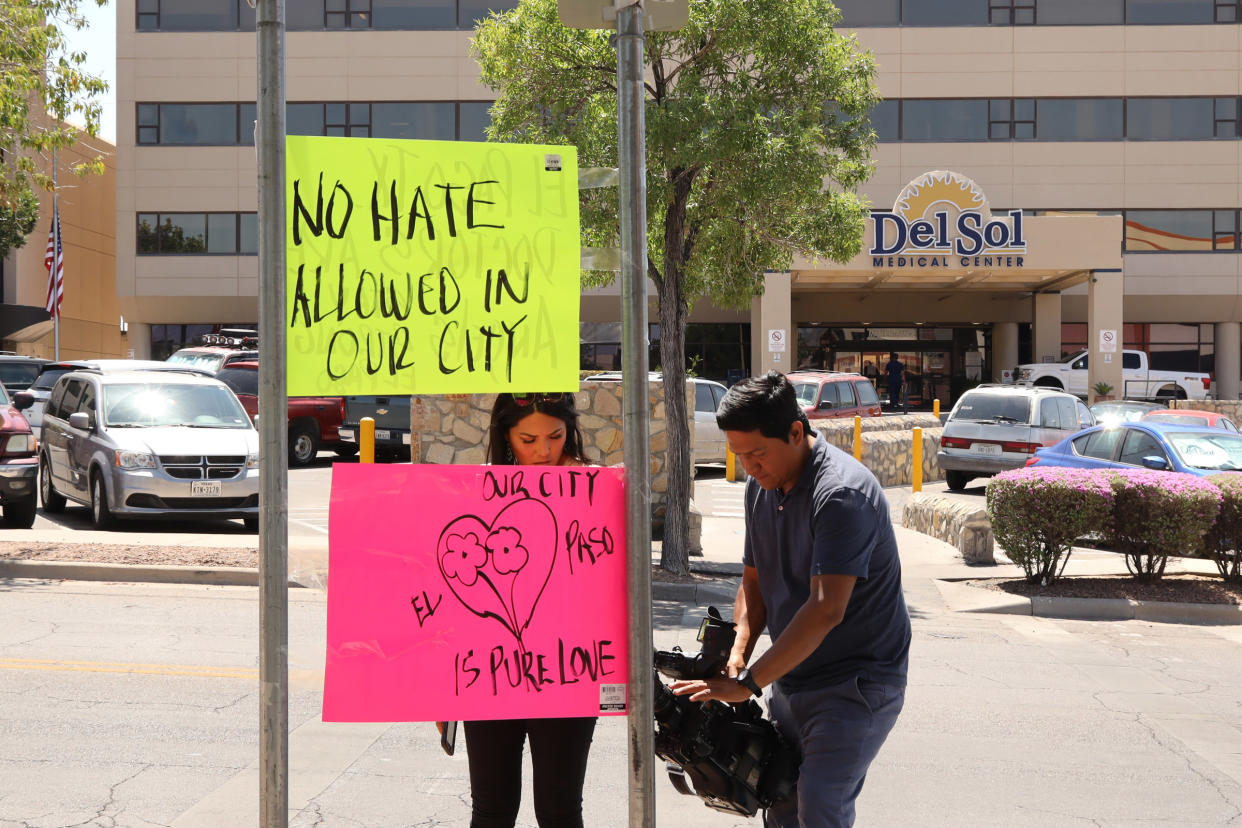El Paso hospital was prepared for a mass shooting, and experts say training is crucial: 'It's not a question of if, but when'

Soon after a gunman opened fire at a Walmart in El Paso, Texas, on Saturday, patients began flooding into the Del Sol Medical Center, just under three miles away. As of Monday afternoon, at least six victims remain hospitalized there.
But while the shooting — which left 22 dead and 26 injured — came as a shock to the nation, it was a tragedy Del Sol had recently prepared for. “We actually brought people into the hospital to do a dry run of a situation just like that,” Stephen Flaherty, MD, a trauma surgeon at Del Sol said during a press conference Sunday. “So we have been through this before, without the real patients.”
David Shimp, chief executive officer of the center, echoed Flaherty’s words, suggesting that training for mass shootings is now a necessary evil. “The unfortunate reality is that this is the world we live, and we were prepped for this,” he said, according to CBS4 Local.
Shimp’s hospital training comments begin at 3:08-mark in video above
As mass shootings and terrorism incidents continue to increase, with more than 251 in the last the 216 days alone, trainings such as the one that took place at Del Sol are now routine nationwide. According to Patti Kunz Howard, president of the Emergency Nurses Association, events like El Paso and Dayton are known in the healthcare world as Mass Casualty Incidents or MCIs.
Howard says that healthcare facilities nationwide now have annual trainings, at minimum, which usually involve drills to learn and master disaster preparedness skills. “We're all doing active shooter training because it's part of our world,” Howard tells Yahoo Lifestyle. “We’re doing simulated scenarios to help our staff know how to respond — both to protect themselves and take care of the patients.”
She says MCIs put pressure on the entire system — from the administrative staff to the doctors. And while there are some standard elements to the trainings, many hospitals create their own plan of action, relying on toolkits in order to prepare.
Jenna Mandel-Ricci, vice president of regulatory and professional affairs at the Greater New York Hospital Association (GNYHA), is the author of one such report. Titled the Mass Casualty Incident Response Toolkit, Mandel-Ricci’s 118-page document outlines best practices for health care professionals responding to MCIs, from signing up for alerts on news-sourcing tools like Dataminr to creating special wristbands in the event that there are too many patients to identify.
The content of the toolkit, according Mandel-Ricci, is shaped by real-life data, including two of the deadliest recent mass shootings, in Orlando and Las Vegas. In the later shooting, which took place in October 2017, a single ER department at Sunrise Hospital was tasked with treating more than 200 patients.

Building on this experience, the toolkit covers everything from patient triage and family reunification to managing media and caring for staff. It also includes a section on patient arrival, which can be one of the first hurdles. “In mass casualty events where there are many, many victims, about 80 percent of people self-evacuate — meaning they get to the hospital on their own,” says Mandel-Ricci. “That's very different than our system of ambulance transport.”
Beyond assessing patients who’ve arrived in unusual ways (e.g. on foot or Uber), doctors and nurses have to make the extremely difficult decision of which patients to prioritize. “Disaster mindset is both the realization that this extraordinary event is happening, and that although this person has dedicated their life to saving every person, now they’re in a situation with limited resources,” she explains. “How can they do the most with what they have? That's why you need to have these hard conversations.”
The issue, a difficult one, was discussed in U.S. News and World Report piece in 2018 by Stephanie Davis, MD, from the American College of Osteopathic Emergency Physicians. "In a mass casualty situation, you may [have] 20 patients come in all at once. We have to change our mindset, and think: 'Who can I save? Who can I not save?'“ Davis told the publication. “It goes completely against everything our training tells us, which is that the sickest or most badly wounded person gets the most attention. I can't save everybody; I have to prioritize. It's something an [emergency room] physician has to train [himself or herself] to do."
It’s because of difficult decisions like these, says Mandel-Ricci, that training is so crucial. “More and more hospitals are doing major exercises up to the point where they're hiring actors looking like they've been shot, coming in screaming and yelling,” she tells Yahoo Lifestyle. “The importance of that is that this is a war zone and if you experienced this before, and if you can go through the emotions and be professional and do your job, it makes you so much more ready if this were to happen in your community.”
Howard agrees, and suggests that while mass shootings like the two that happened this weekend may cause heightened anxiety among the general public, healthcare professionals are already bracing for them each day. “I think hospitals are very prepared because mass casualty events are one of our biggest concerns,” she tells Yahoo Lifestyle. “It's not a question of if, but when.”
Read more from Yahoo Lifestyle:
Multiple Fatalities Reported In Shooting At An El Paso, TX Walmart
Presidential candidates condemn gun violence after El Paso shooting: 'Truly heartbreaking'
Teacher allegedly pulled out gun after getting cut off in McDonald's drive-thru: 'I felt threatened'
Follow us on Instagram, Facebook, and Twitter for nonstop inspiration delivered fresh to your feed, every day.
